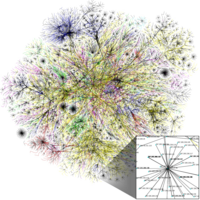
Photo from wikipedia
Background The simulation team has grown significantly over the last year, with the addition of a Simulation Training Officer and two Simulation Fellows (Anesthetic and Medical) to our existing team… Click to show full abstract
Background The simulation team has grown significantly over the last year, with the addition of a Simulation Training Officer and two Simulation Fellows (Anesthetic and Medical) to our existing team consisting of a lone technician. Simulation based education (SBE) at Darent Valley Hospital (DVH), prior to this, was predominantly delivered to the doctors, with other allied health care colleagues receiving little, if any, SBE. The Simulation Team redeveloped existing simulations and broadened the scope of delivery of our SBE. Summary of work The foundation programme was redesigned to combine the two foundation year groups and to include Core Medical Trainees as well as inviting preceptor nurses to participate. This inter-professional model was more representative of ‘real-life’ working. Speciality specific simulation days, encompassing a blended learning approach, were developed. These were attended by the inter-professional team including doctors, nurses, students and allied health care professionals and meant that these simulations were truly inter-professional. In order to broaden our areas of delivery, address specific areas of concern and identify clinical latent threats we designed and delivered an in-situ programme. Results Overall activity increased from 55 activities in 16/17 to over 80 activities so far in 17/18. Inter-professional simulation now accounts for 43% of the activity compared to 15% in the previous year. This increase has been noted by the participants, with feedback commenting on the value of IPE. There has been an increase in Nurse use but AHP use has remained static at present. Discussion Whilst our overall numbers of SBE, including IPE has increased, individual numbers of nurses and AHP attending simulation has not been as high as we had anticipated. Staff shortages and difficulties in nurses and AHP obtaining study leave may be a causal factor. Initial results from our in-situ simulation involvement has shown that we are able to include nurses and AHP more easily than in simulation centre based activity. Recommendations We plan to include more nurses and AHP in SBE, with the aim of increasing our in-situ SBE to areas such as out-patients, endoscopy and pharmacy. Whilst evaluation of feedback from all our programmes have achieved Kirkpatrick (Kirkpatrick and Kirkpatrick 2009) Levels 1 and 2, we wish to collect further data not only to conduct a level 3 Kirkpatrick evaluation but also to ensure ongoing support from our stakeholders. Reference Kirkpatrick J, Kirkpatrick W. The kirkpatrick four levels: A fresh look after 50 years 1959–2009 2009. Kirkpatrick Partners. Available at: http://www.kirkpatrickpartners.com/Portals/0/Resources/Kirkpatrick%20Four%20Levels%20white%20paper.pdf [Accessed: 31 May 2018].
Journal Title: BMJ Simulation and Technology Enhanced Learning
Year Published: 2018
Link to full text (if available)
Share on Social Media: Sign Up to like & get
recommendations!